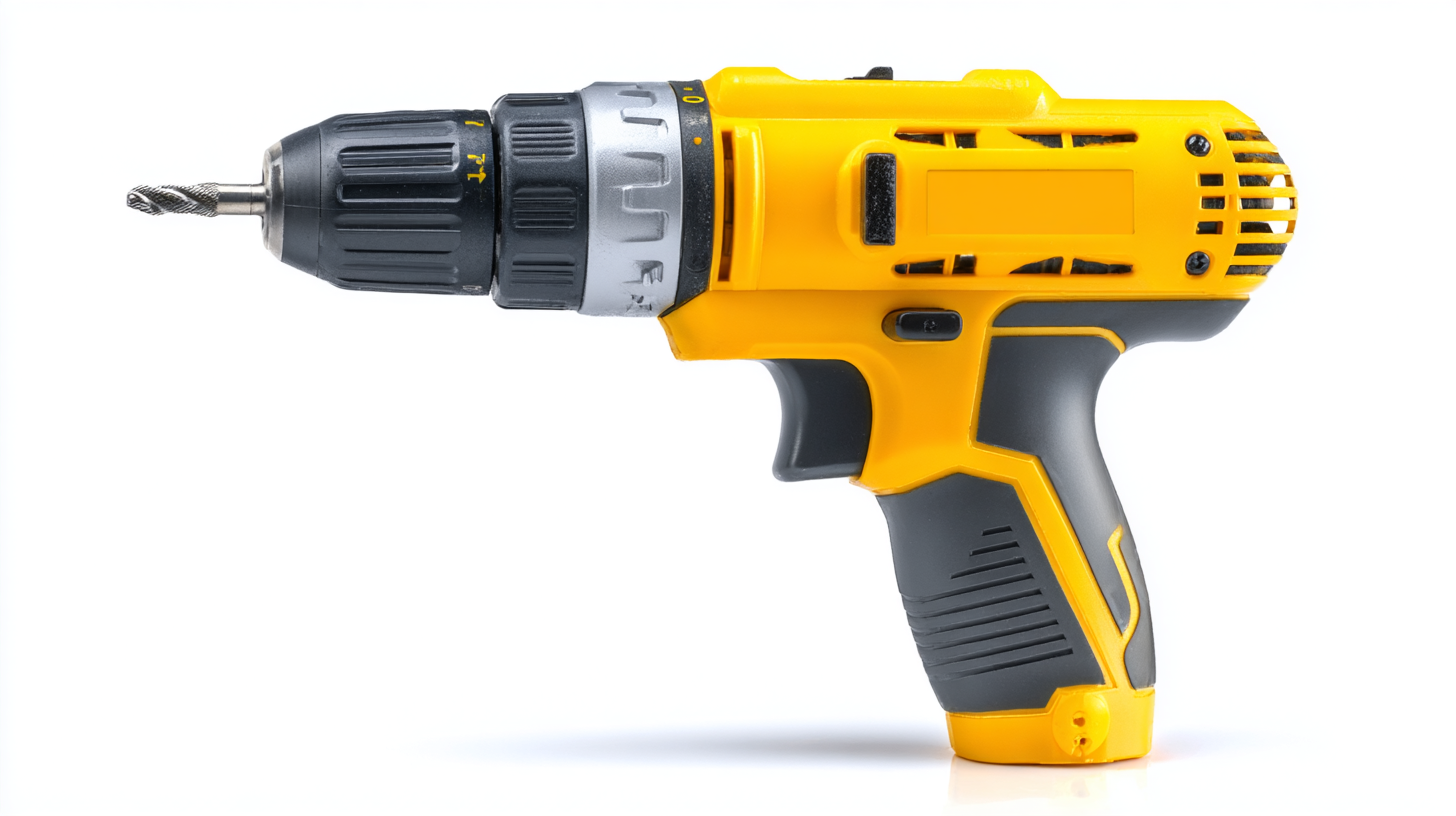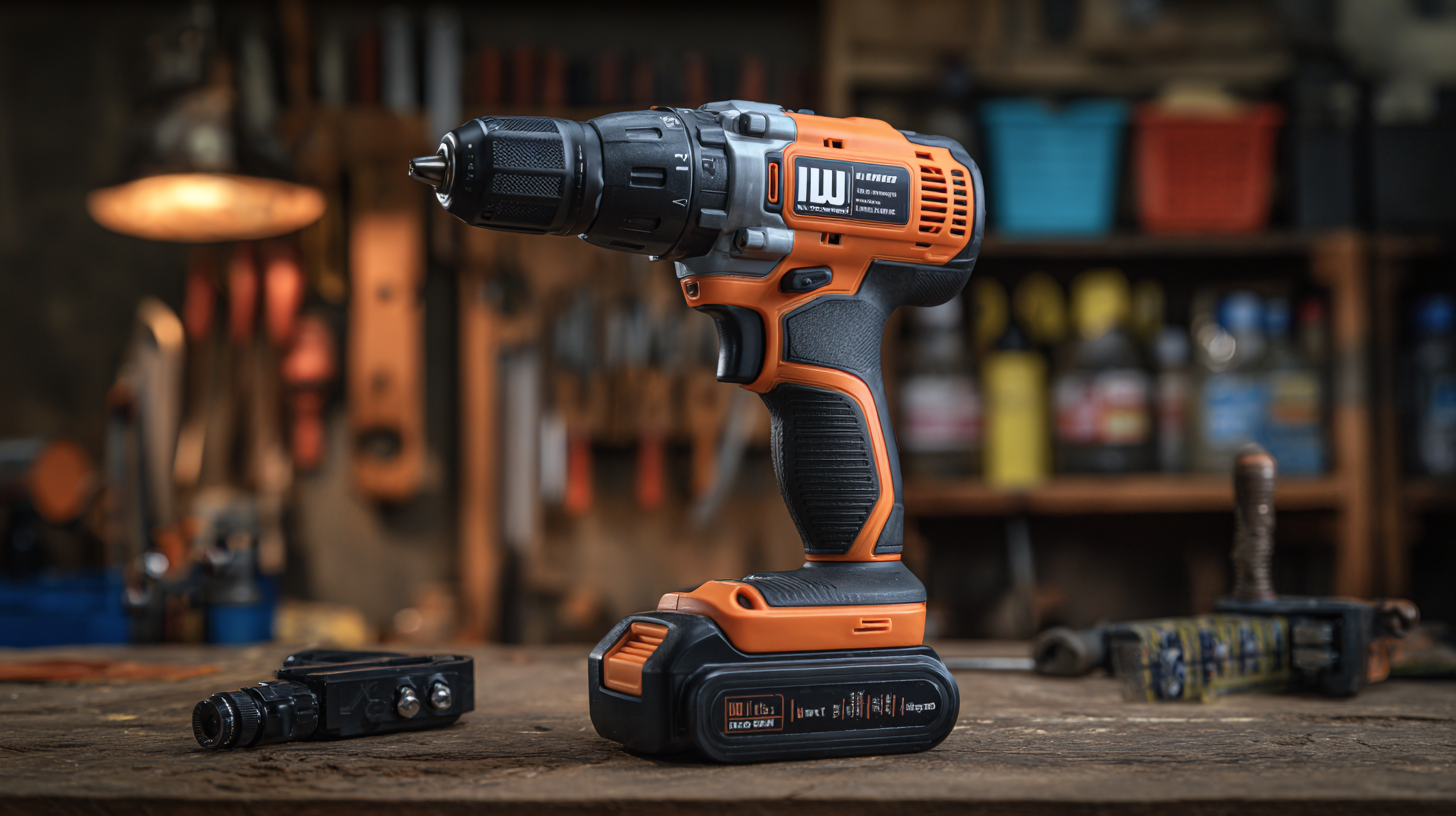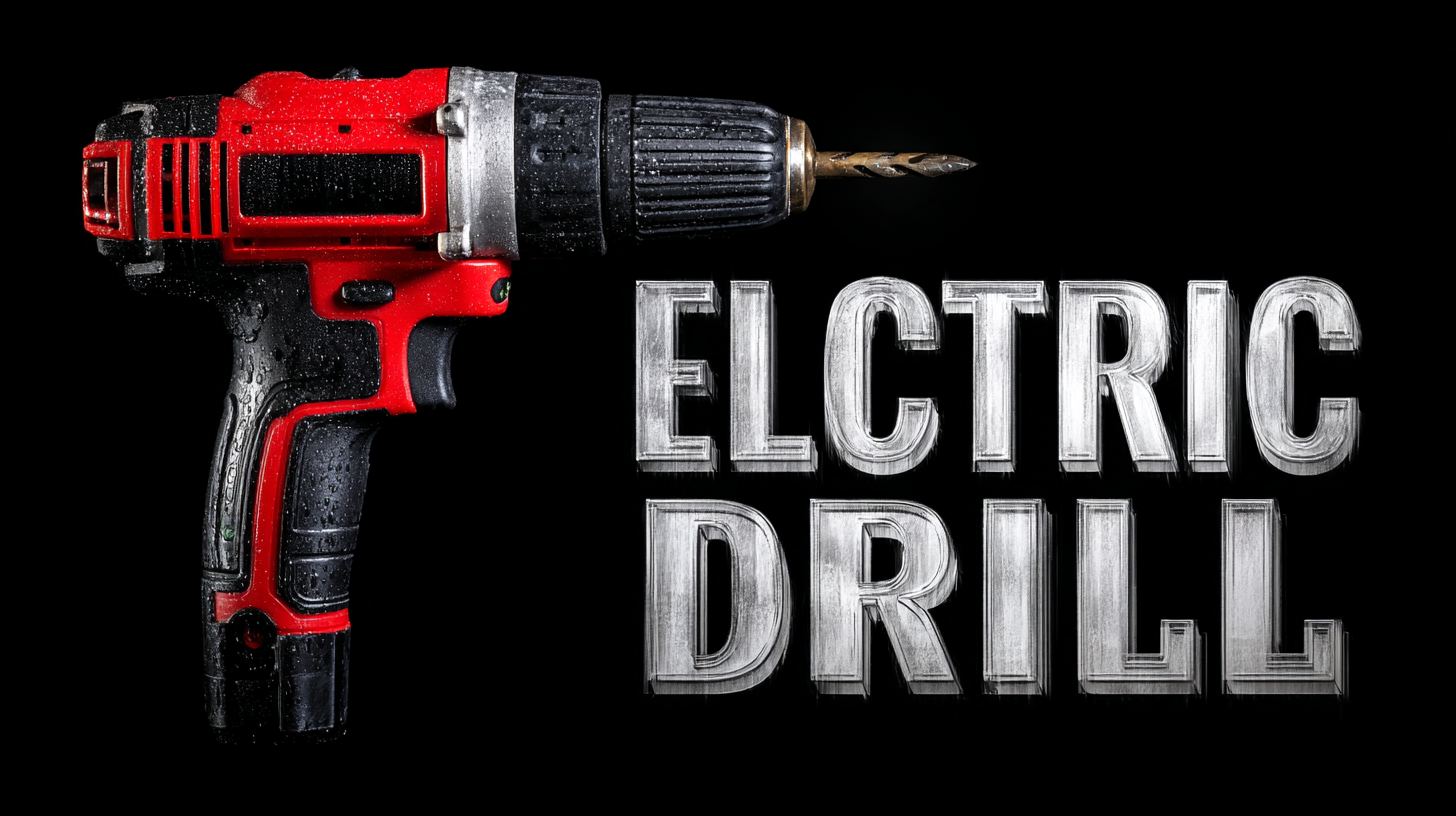Transforming Your DIY Projects with the Best Cordless Electric Drill Practical Applications and How to Guide
In the realm of DIY projects, having the right tools can make all the difference, and one indispensable tool is the Cordless Electric Drill. This versatile device not only enhances efficiency but also empowers crafters and handymen alike to tackle a wide variety of tasks with ease. Whether you're assembling furniture, hanging shelves, or working on home improvement projects, a Cordless Electric Drill offers the freedom of movement without being tethered to a power outlet.
In this blog, we'll explore practical applications of this essential tool and provide a comprehensive how-to guide, ensuring you harness the full potential of your Cordless Electric Drill. By the end, you'll be equipped with tips and tricks to elevate your DIY experience and transform the way you approach your projects.
Choosing the Right Cordless Electric Drill for Your DIY Needs
When it comes to selecting the right cordless electric drill for your DIY needs, understanding the various specifications is crucial. According to a report from Market Research Future, the global power tools market is expected to grow at a compound annual growth rate (CAGR) of 4.5% from 2020 to 2026. This growth reflects the increasing popularity of DIY projects among homeowners, making it essential to choose a drill that fits your specific tasks. Factors such as battery capacity, torque, and drill speed should be your primary considerations. For instance, drills with higher voltage batteries (such as 18V and 20V) are generally more powerful and suitable for heavy-duty applications.
Additionally, ergonomics and weight are important elements that can significantly impact your project's success. A study published in the Journal of Ergonomics highlights that tool weight can affect user fatigue and overall productivity. Lightweight models can enhance maneuverability and reduce strain during extended use. Furthermore, it's vital to assess the drill's chuck size and compatibility with various drill bits to maximize versatility. By prioritizing these factors, you can select a cordless electric drill that will not only meet but exceed your DIY project expectations, ensuring efficiency and satisfaction in every task.
Key Features to Look for in Cordless Electric Drills
When selecting a cordless electric drill for your DIY projects, understanding the key features is crucial to maximize efficiency and effectiveness. According to a recent report by the Power Tool Institute, the global cordless drill market is projected to grow significantly, driven by advancements in battery technology and a surge in DIY home improvement activities. One of the primary features to consider is battery capacity. Drills with lithium-ion batteries typically offer longer run times and reduce downtime, which is critical for extensive tasks. A drill with a 2.0Ah battery or higher can provide adequate power for most home projects and is increasingly common in today’s models.
Another essential feature is the drill’s torque adjustment settings. Torque refers to the turning force of the drill, and having multiple torque settings allows users to handle various materials with precision. For instance, a drill with a torque setting of at least 25 Nm is versatile enough for both softwood and harder materials. Additionally, ergonomic design is vital; tools that are lightweight and have a comfortable grip can help reduce fatigue during prolonged use. A survey by the Hand Tools Institute indicated that 75% of users prioritize comfort and ease of use, making this an important consideration when choosing the right cordless electric drill for your projects.
Comparison of Cordless Electric Drill Features
Comparing Different Types of Cordless Electric Drills: Pros and Cons
When considering a cordless electric drill for your DIY projects, it's essential to compare the different types available on the market, each with its distinct advantages and disadvantages.
Lithium-ion drills have become incredibly popular due to their lightweight design and long-lasting battery life. They provide consistent power and require less maintenance than their nickel-cadmium counterparts.
However, one downside is their higher upfront cost, which might not suit every budget.

Another option is the brushless drill, which offers a longer lifespan and improved energy efficiency.
Unlike traditional brushed models, brushless drills generate less heat and wear, allowing for prolonged use without the concern of overheating.
While they typically come at a premium price, the investment can pay off over time with reduced maintenance costs.
On the other hand, lower-priced brushed drills may be appealing for casual users, but they often experience shorter battery life and increased wear, making them less ideal for more intensive projects.
Ultimately, selecting the right cordless electric drill hinges on balancing your needs, frequency of use, and budget considerations.
Practical Applications: When to Use Each Type of Drill
When embarking on DIY projects, choosing the right type of drill can make a significant difference in efficiency and output quality. According to a report by IBISWorld, the power tool market is projected to grow to $8.2 billion by 2024, indicating a robust demand for effective tools like electric drills. Cordless electric drills offer unparalleled convenience, enabling users to maneuver easily without the hindrance of cords. These are particularly useful for tasks that involve drilling into walls for shelving, assembling furniture, or any project requiring mobility and versatility.

For detailed applications, it’s essential to understand when to use what type of drill. A standard cordless drill is ideal for light to medium tasks like screwing and drilling into softwoods. Meanwhile, a hammer drill is perfect for tougher jobs, such as drilling into masonry or concrete, due to its added impact mechanism. Industry data shows that professionals prefer hammer drills for heavy-duty applications as they outperform standard drills in durability and efficiency. As DIY enthusiasts increasingly aim for professional-grade results, knowing the correct application for each drill type becomes an invaluable skill that enhances both the experience and the outcome of their projects.
Maintenance Tips to Extend the Life of Your Cordless Electric Drill
When it comes to maintaining your cordless electric drill, thoughtful care can significantly extend its lifespan and enhance performance. One of the key aspects to consider is how and where you store the drill and its batteries. High temperatures, especially in hot garages, can adversely affect battery health. It's advised to keep your batteries in a cool and dry environment to prevent degradation due to heat exposure. Regularly inspect the battery for any signs of damage and ensure the contacts are clean for optimal connectivity.
Another practical tip involves routine maintenance of the drill itself. Keep the chuck clean and lubricated, which allows for smoother operation when changing bits. Periodically check the housing for any dust buildup that could interfere with the motor. Additionally, ensuring your drill is always charged properly can prevent the battery from becoming overworked, adding to its longevity. By integrating these maintenance habits, you can ensure that your cordless electric drill remains a reliable tool in your DIY projects for years to come.
Transforming Your DIY Projects with the Best Cordless Electric Drill
| Application |
Tip |
Maintenance Schedule |
Lifespan Expectation |
| Furniture Assembly |
Use a sharp drill bit for clean holes. |
Monthly check for loose parts and debris. |
3-5 years with regular maintenance. |
| Home Repairs |
Choose the right torque setting for different materials. |
Clean battery contacts every 6 months. |
2-4 years depending on usage. |
| Craft Projects |
Test drill speed on scrap material. |
Inspect drill for signs of wear quarterly. |
3-5 years with proper care. |
| Outdoor Projects |
Use weather-resistant bits and screws. |
Lubricate moving parts once a year. |
2-3 years with exposure to elements. |
 English
English English
English Español
Español Português
Português русский
русский Français
Français 日本語
日本語 Deutsch
Deutsch tiếng Việt
tiếng Việt Italiano
Italiano Nederlands
Nederlands ภาษาไทย
ภาษาไทย Polski
Polski 한국어
한국어 Svenska
Svenska magyar
magyar Malay
Malay বাংলা ভাষার
বাংলা ভাষার Dansk
Dansk Suomi
Suomi हिन्दी
हिन्दी Pilipino
Pilipino Türkçe
Türkçe Gaeilge
Gaeilge العربية
العربية Indonesia
Indonesia Norsk
Norsk تمل
تمل český
český ελληνικά
ελληνικά український
український Javanese
Javanese فارسی
فارسی தமிழ்
தமிழ் తెలుగు
తెలుగు नेपाली
नेपाली Burmese
Burmese български
български ລາວ
ລາວ Latine
Latine Қазақша
Қазақша Euskal
Euskal Azərbaycan
Azərbaycan Slovenský jazyk
Slovenský jazyk Македонски
Македонски Lietuvos
Lietuvos Eesti Keel
Eesti Keel Română
Română Slovenski
Slovenski मराठी
मराठी Srpski језик
Srpski језик



